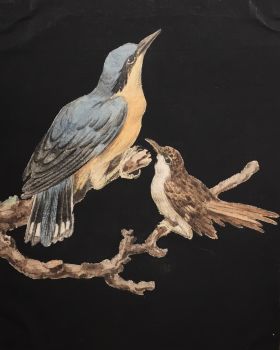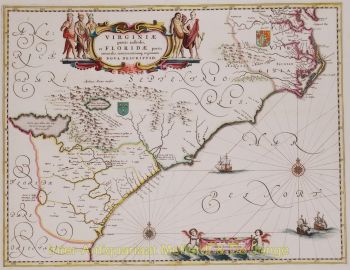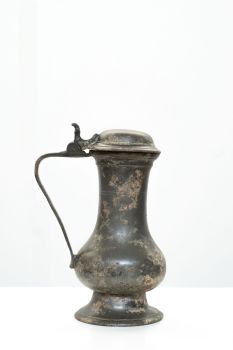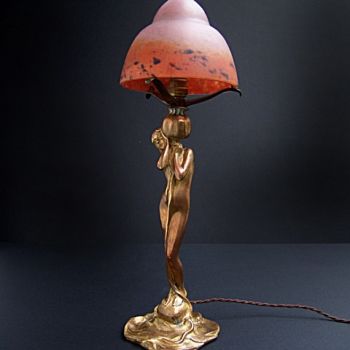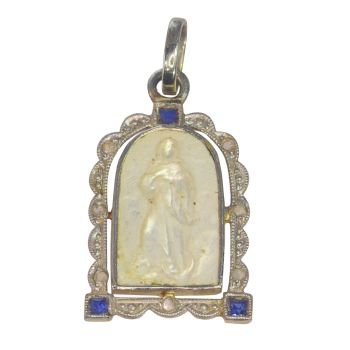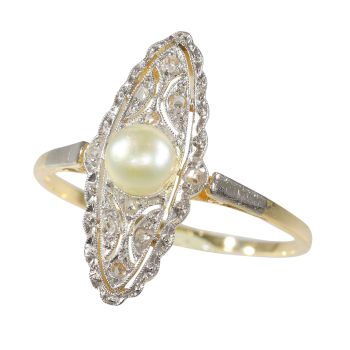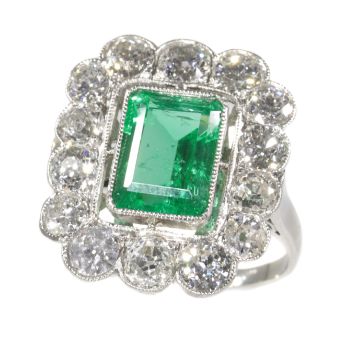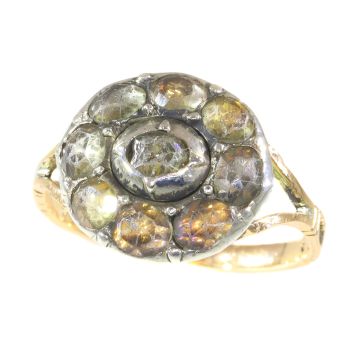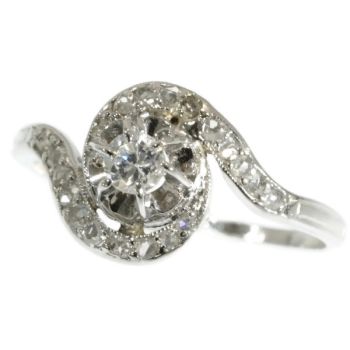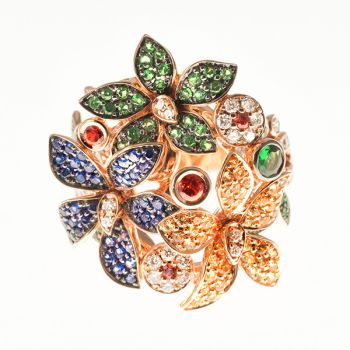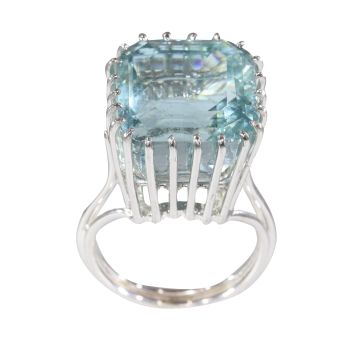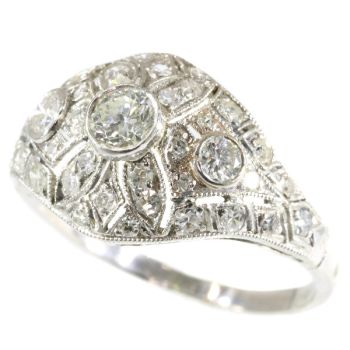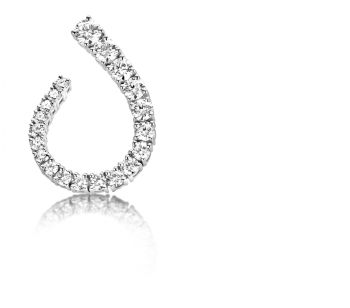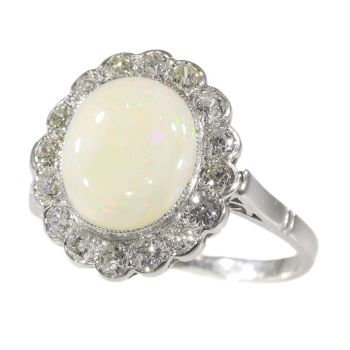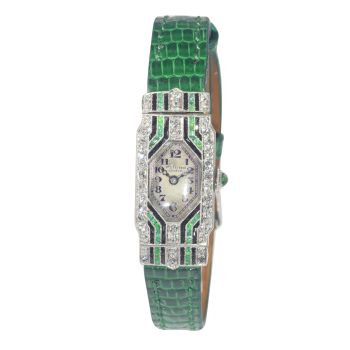Notável anel de noivado de diamante vitoriano com "design" Aigrette 1890
Artista Desconocido
DiamantePiedra preciosa
€ 4.250
Adin Fine Antique Jewellery
- Sobre la obra de arte
Antique jewelry object group: engagement ring (or anniversary ring)
Condition: very good condition
- (more info on our condition scale)
Country of origin:Although it does not carry any legible control marks we believe this to be of Belgian origin.
Style: Victorian - Victorian decorative arts refers to the style of decorative arts during the Victorian era. The Victorian era is known for its eclectic revival and interpretation of historic styles and the introduction of cross-cultural influences from themiddle east and Asia in furniture, fittings, and Interior decoration. Victorian design is widely viewed as having indulged in a regrettable excess of ornament. The Arts and Crafts movement, the aesthetic movement, Anglo-Japanese style, and Art Nouveaustyle have their beginnings in the late Victorian era.
- See also: Victorianor more info on styles
Style specifics: Victorian - In 1837 Queen Victoria begins the longest reign in the history of Great Britain. For 64 years, from 1837 till 1901, she symbolizes the growth and triumph of the British Empire as Queen of Great Britain and Ireland and Empress of India.Proud, passionate about beautiful things, highly educated about all styles of time, she influences the lifestyles through her taste and immense love of jewelry.
Victorian decorative arts refers to the style of decorative arts during the Victorian era. The Victorian era is known for its eclectic revival and interpretation of historic styles and the introduction of cross-cultural influences from the middle eastand Asia. The Arts and Crafts movement, the aesthetic movement, Anglo-Japanese style, and Art Nouveau style have their beginnings in the late Victorian era. (Last part freely rendered from: Wikipedia)
Period: ca. 1890
- (events & facts of this era, poetry of this era, fashion of this era)
Source of inspiration: Aigrette-inspired. An aigrette is a hair ornament designed to hold or depict feathers. This fashion reached it's peak at the end of the 19th century when hats were often made entirely of feathers. Aigrettes were very much favored during the latter partof the Victorian period. Simpler, shorter Art Deco hair styles were often adorned with bandeaus and other hair ornaments, including aigrettes.
Extra information: Diamond is the birthstone for the month of April, and besides being the most popular gemstone for engagement rings, it is also the anniversary gem for the 10th and 60th years of marriage.
Even though the diamond is the hardest of all gemstones known to man, it is the simplest in composition: it is common carbon. The ancient Greeks believed that diamonds were splinters of stars fallen to earth. It was even said by some that they were thetears of the Gods or perhaps crystallized lightning or hardened dew drops. The exact origin of diamonds remained something of a mystery for centuries.
In ancient times only kings wore diamonds as a symbol of strength, courage and invincibility. Over the centuries, the diamond acquired its unique status as the ultimate gift of love. It was said that Cupid's arrows were tipped with diamonds which have amagic that nothing else can ever quite equal.
But it wasn't until 1477, when Archduke Maximillian of Austria gave a diamond ring to Mary of Burgundy, that the tradition of diamond engagement rings began. Even the reason a woman wears it on the third finger of her left hand dates back to the earlyEgyptian belief that the vena amoris (vein of love) ran directly from the heart to the top of the third finger, left hand.
Material: 18K bi-color (yellow and red) gold
- (more info on precious metals)
It is known that there were upto 30 different colours of gold begin used in France since the end of the nineteenth century. This ring consists of more yellow toned and more red or warm yellow toned gold. Regarding the variety in colours, it is difficultto determine the exact colour.
Diamond(s): Two old brilliant cut diamonds with natural fancy orangy brownish colour with an estimated weight of ± 0.70ct. . One of the two diamonds has got a more soft beige undertone. The other one a warmer orange undertone. (clarity: i).
Two old brilliant cut diamonds with an estimated weight of ± 0.40ct. (colour and clarity: I/J, si/i).
Total diamond count: Four pcs.
Total diamond weight: approx. 1.10 crt.
- All diamond weights, color grades and clarity are approximate since the stones were not removed from their mounts to preserve the integrity of the setting.
Birthstones: Diamond is the birthstone (or month stone) for April.
- (more info on birthstones)
More background information on: victorian, engagement ring,
Hallmarks: No trace.
- (more info on hallmarks)
Dimensions: length ca. 1,67 cm (0,66 inch) x width ca. 0,88 cm (0,35 inch) x height ca. 0,50 cm (0,20 inch)
Weight: 3,30 gram (2,12 dwt)
Ring size Continental: 49 & 13¾ , Size US 5 , Size UK: J
Resizing: Free resizing (only for extreme resizing we have to charge).
- (more info on ring sizes)
Reference Nº: 17247-0375
Copyright photography: Adin, fine antique jewelry
- Sobre el artista
Puede suceder que un artista o creador sea desconocido.
Algunas obras no deben determinarse por quién está hecho o por (un grupo de) artesanos. Algunos ejemplos son estatuas de la Antigüedad, muebles, espejos o firmas que no son claras o legibles, pero también algunas obras no están firmadas en absoluto.
También puedes encontrar la siguiente descripción:
•"Atribuido a …." En su opinión, probablemente una obra del artista, al menos en parte.
•“Estudio de….” o “Taller de” En su opinión, una obra ejecutada en el estudio o taller del artista, posiblemente bajo su supervisión
•“Círculo de…” En su opinión, una obra del período del artista que muestra su influencia, estrechamente asociado con el artista pero no necesariamente su alumno.
•"Estilo de …." o “Seguidor de…”. En su opinión, una obra ejecutada al estilo del artista pero no necesariamente por un alumno; puede ser contemporáneo o casi contemporáneo
•"Manera de …." En su opinión una obra al estilo del artista pero de fecha posterior
•"Después …." En su opinión, una copia (de cualquier fecha) de una obra del artista
•“Firmado…”, “Fechado…” o “Inscrito” En su opinión, la obra ha sido firmada/fechada/inscrita por el artista. La adición de un signo de interrogación indica un elemento de duda.
•“Con firma…”, “Con fecha…”, “Con inscripción…” o “Lleva firma/fecha/inscripción” en su opinión la firma/fecha/inscripción ha sido añadida por alguien que no es el artista
¿Está interesado en comprar esta obra de arte?
Artwork details
Related artworks
- 1 - 4 / 12
- 1 - 4 / 24
- 1 - 4 / 24
- 1 - 4 / 24
- 1 - 4 / 24
- 1 - 4 / 12








